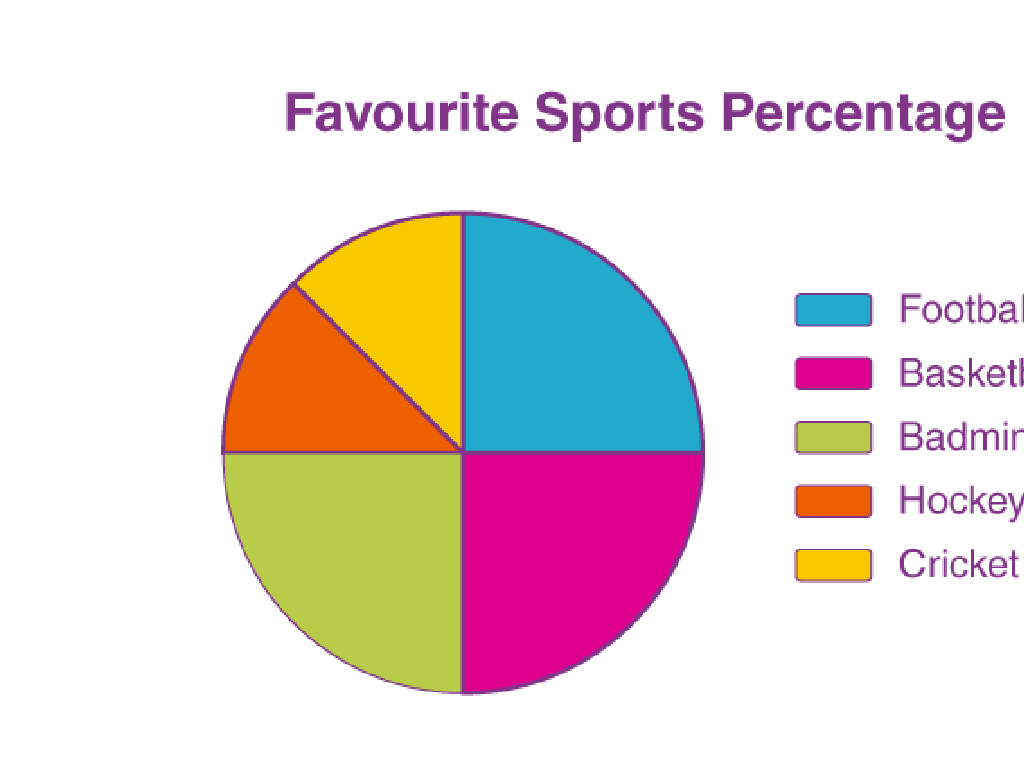Describe And Graph Water On Earth
Subject: Science
Grade: Fourth grade
Topic: Earth'S Features
Please LOG IN to download the presentation. Access is available to registered users only.
View More Content
Today’s Adventure: Water on Earth!
– Earth’s surface: Land and Water
– Earth is made up of continents and oceans.
– Water covers most of Earth
– Oceans, seas, rivers, lakes make up 71% of the surface.
– Water’s roles in Earth’s systems
– Water shapes weather, supports ecosystems.
– Why water is vital for life
– All living things need water to survive.
|
This slide introduces students to the concept of Earth’s surface and the significance of water on our planet. Begin by explaining that Earth’s surface is divided into land and water, with water bodies covering most of the Earth. Emphasize the vastness of the oceans and the presence of water in various forms like rivers and lakes. Discuss the critical roles water plays in weather patterns, climate, and supporting diverse ecosystems. Highlight the importance of water for all forms of life, from the smallest microorganisms to the largest animals, and its necessity for human survival and civilization. Encourage students to think about how they use water daily and to brainstorm ways to conserve this precious resource.
Water: Earth’s Vital Resource
– Water: A simple, vital molecule
– H2O, essential for all life forms
– Water exists in three states
– Ice, water, and steam are all forms of water
– Daily uses of water
– Drinking, cleaning, and growing food
– Water’s role in Earth’s features
– Rivers, oceans, and ice caps shape our planet
|
This slide introduces students to the concept of water as a fundamental molecule that supports life and shapes Earth’s features. Begin by explaining that water, or H2O, is a simple molecule made up of two hydrogen atoms and one oxygen atom, yet it has a huge impact on our planet. Discuss the three states of water: solid (ice), liquid (water), and gas (steam), and how they can be found naturally in the environment. Highlight how we use water in our daily lives, such as for hydration, hygiene, and agriculture. Finally, touch on the importance of water in shaping Earth’s features, including the creation of landforms like rivers and oceans, and its role in the climate. Encourage students to think about how different forms of water are present in their own environment and to bring examples to the next class.
Water Distribution on Earth
– Oceans: Earth’s largest water bodies
– Cover about 71% of Earth’s surface and hold 96.5% of all water.
– Ice caps and Glaciers: Frozen water stores
– Store much of Earth’s fresh water, but it’s frozen.
– Groundwater, Lakes, and Rivers: Accessible fresh water
– Fresh water that we can use for drinking, farming, and living.
– Drinkable water is scarce!
– Only about 1% of Earth’s water is fresh and easily accessible.
|
This slide aims to educate fourth-grade students on the distribution of water on Earth. Emphasize that while water covers a vast majority of our planet, the amount that is readily available and safe for human consumption is very limited. Discuss the role of oceans as the main reservoir of water, the significance of ice caps and glaciers as stores of fresh water, and the importance of groundwater, lakes, and rivers as sources of the water we use daily. Highlight the critical point that despite the abundance of water on our planet, only a small fraction is drinkable, which underscores the importance of water conservation and protection of water resources.
The Water Cycle: Earth’s Incredible Journey
– Water’s movement: Evaporation to Rain
– Sun heats water, it rises as vapor, cools down, becomes clouds, and falls as rain.
– Follow a droplet’s adventure
– Imagine being a tiny droplet traveling from rivers to the sky and back!
– Water cycle’s role in weather
– How does the water cycle affect sunny days and stormy nights?
– The cycle: A continuous loop
|
This slide introduces the water cycle as a fundamental concept in understanding Earth’s features. Begin by explaining how water moves through evaporation, condensation, and precipitation. Use a storytelling approach to describe the journey of a water droplet, making it relatable and engaging for fourth graders. Discuss how the water cycle contributes to different weather patterns, influencing what we experience as sunny, rainy, or snowy days. Emphasize that the water cycle is a continuous process that recycles water on Earth. Encourage students to observe this cycle in their daily lives and to think about the various forms water takes as it travels through its cycle.
Graphing Water on Earth
– Understand Earth’s water distribution
– Create your own water graph
– Use a bar graph to show different water sources
– Visualize water types on Earth
– Oceans, ice caps, groundwater, and rivers
– Hands-on graph plotting activity
|
This slide introduces students to the concept of graphing the distribution of water on Earth. Begin by discussing the various sources of water on our planet, such as oceans, ice caps, groundwater, and rivers. Explain that most of Earth’s water is in the oceans and that fresh water is much less common. Then, guide the students in creating their own bar graphs to visualize these differences. Provide them with data on the percentages of water distribution and assist them in plotting this data on a graph. This hands-on activity will help solidify their understanding of the water cycle and the importance of water resources. Make sure to have graph paper and coloring materials ready for the students to use. Encourage creativity and ensure that each student understands how to represent data visually.
Water Conservation
– Importance of saving water
– Water is precious for all life on Earth.
– Easy methods to conserve water
– Turn off taps, fix leaks, use less when brushing.
– Our class water-saving pledge
– We promise to use water wisely and teach others too.
|
This slide aims to educate students on the critical importance of water conservation. Begin by discussing why water is essential for life and the environment, and how it’s a limited resource. Introduce simple, actionable methods that children can implement in their daily lives, such as turning off the tap while brushing their teeth or fixing leaks at home. Conclude with a class pledge, creating a sense of responsibility and community effort towards saving water. Encourage students to come up with their own ideas for the pledge and discuss how they can influence their families and friends to conserve water as well.
Class Activity: Home Water Usage Survey
– Conduct a water survey at home
– Record your water usage findings
– Note the times and activities using water
– Share results with the class
– Be prepared to tell us about your water use
– Discuss water conservation methods
– Think of ways to use less water
|
This activity is designed to engage students with practical learning about water usage and conservation. Students will conduct a survey at home to observe and record different ways water is used during a day. They should note activities such as brushing teeth, showering, and washing dishes. Encourage them to be detailed in their recording. In the next class, students will share their findings, providing a platform for discussion on how much water we use and how we can conserve it. Possible conservation methods to discuss could include turning off the tap while brushing teeth, taking shorter showers, and reusing water for plants. This activity will help students understand the importance of water conservation and empower them to make changes in their daily routines.




/colonial_america_settlement.jpg)

